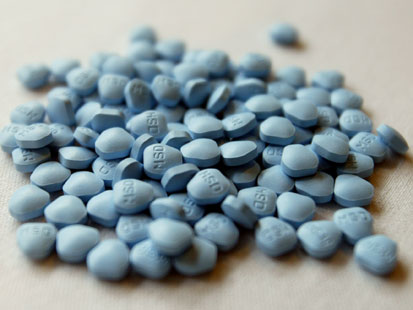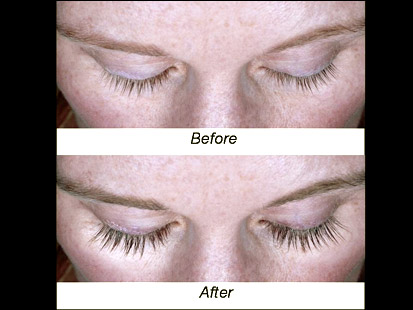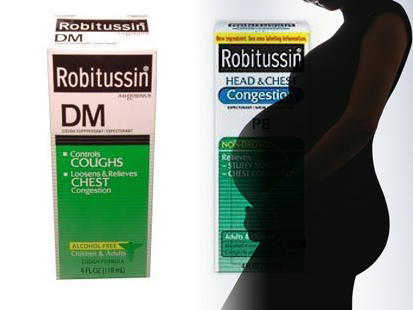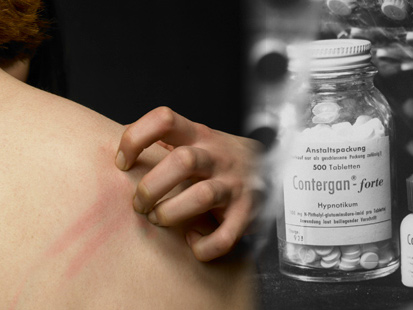Baldness Med to Beat Cancer? Eight Drug Alter-Egos
Widely known for one effect, they often have surprising hidden uses.
Feb. 26, 2009— -- Would you take a baldness drug to protect against prostate cancer? Or Viagra to help avoid an amputation?
While most people think of medicines as single-role actors, there are a growing number of drugs that hold the potential for dual uses. This so-called "off-label" use of medicines accounts for about one-fifth of all prescriptions, according to a study released last April in the New England Journal of Medicine.
Many such applications come with their fair share of controversy.
In the aforementioned example of the hair-loss drug finasteride being recommended by some medical organizations as a preventative measure against prostate cancer, many doctors say that such a use is inefficient and ill-advised.
In the case of Viagra, no conclusive studies yet exist that confirm a definite benefit when used in patients at risk of amputation.
But in many other cases, the alternative uses are well-known in the medical community -- though perhaps not among the general public -- and are regularly exploited.
Get Your Wellness Questions Answered at the ABCNews.com OnCall+ Wellness Center
And while a November article in the journal Pharmacotherapy warned doctors to exercise more scrutiny in their prescription of drugs for purposes other than their primary intended use, it is clear that some of these MacGyvers of the pharmaceutical world are destined for double duty in the years to come.
Finasteride
On Tuesday, two medical organizations -- the American Society of Clinical Oncology (ASCO) and the American Urological Association (AUA) -- announced new guidelines that recommend that millions of men over age 55 who are regularly screened for prostate cancer speak with their doctor about taking a drug which might reduce their risk of the disease.
This drug is finasteride -- a drug that has been shown in studies to help ward off prostate cancer, but which is perhaps more well-known as the hair-loss drug Propecia.

Indeed, in a 2003 study involving 18,000 men, finasteride was shown to cut the risk of prostate cancer by around 8 percent.
"If a man is getting screened because he's worried about prostate cancer, taking the drug is a very rational thing to do along with screening," Dr. Otis Brawley, chief medical officer of the American Cancer Society, told ABC News.
But at the estimated cost of $90 a month, the drug is expensive. And in the earlier trials there was some evidence that the drug might cause high-grade cancers. While proponents have denied such findings, other doctors have voiced their concern over this potential use of the drug.
"There are way too many side effects, and I believe that if they get cancer on finasteride, it's going to be biologically more aggressive," said Dr. Aaron Katz, director of the Center for Holistic Urology at Columbia University. "This is not the way to prevent cancer of the prostate."
"I still do not feel that this is ready for prime time," agreed Robert Getzenberg, director of urology research at the Brady Urology Institute at Johns Hopkins Hospital. "There are too many important questions that are unanswered."
Viagra
In a pinch, doctors may look to the erectile dysfunction drug Viagra as a means to increase blood flow to tissues in the body that need it. Such was the case when 20-year-old college sophomore Jamie Schanbaum suffered meningitis and, shortly thereafter, an infection that threatened her fingers and legs.

Dr. Peter Lin, Schanbaum's doctor, who treated her at St. Joseph's hospital outside of Houston, said his team used the drug to see if it would be possible to spare Schanbaum the extensive amputations some physicians suggested as the only way to control the gangrene in her arms and legs.
"Viagra stimulates blood flow," Lin told ABCNews.com. "We wanted as much blood flow to get to the damaged area as possible."
While Viagra's usefulness in this regard has yet to be confirmed, an Australian study this year looked at the possibility that the drug might help increase blood flow to the uterus in pregnant women, which could in turn help developing fetuses receive more oxygen. Other studies have also taken a look at whether the drug could one day be used to increase blood flow to the brains of patients with multiple sclerosis, as well as whether it could help travelers deal with jet lag.
Botox
It's a drug whose name has become synonymous with cosmetic treatment. But many forget that Botox -- the most commonly known brand name for botulinum toxin type A -- had its humble start in the treatment of crossed eyes and spastic conditions as early as the 1970s.

However, the reputation of the drug changed forever in 2002 when the U.S. Food and Drug Administration approved it for the treatment of facial frown lines. Injecting the solution into the faces of their patients, doctors could selectively paralyze certain muscles implicated in the formation of wrinkles.
Now, doctors are further stretching the drug's usefulness by treating patients who experience certain type of hyperlacrimation -- in other words, the overproduction of tears in response to certain stimuli.
For 58-year-old Patricia Webster of Maidstone, England, who had been living with the degenerative nerve condition known as Guillain-Barre syndrome, the occasional shot straight into her tear ducts means freedom from an embarrassing symptom of her condition in which she would appear to cry whenever she ate.
"For the last 18 years of my life I've done nothing, and the embarrassment of my eyes was a major part of this," she told ABCNews.com.
Still, even Webster was skeptical when her doctor first offered up the treatment.
"Of course, I'm thinking, 'Botox ... it's a cosmetic treatment.' I thought, 'He's not worried about my eye, he's telling me that I'm wrinkly,'" Webster said.
In addition to hyperlacrimation, some doctors are also using Botox to help relieve chronic pain.
Latisse
Many glaucoma patients using an eye drop known as bimatoprost to improve their vision have enjoyed an unexpected side effect -- thicker, more luxurious eyelashes.
The effects of the medication were so pronounced, in fact, that the FDA recently approved the drug for this cosmetic use. Allergan, the company that manufactures the glaucoma drug known as Lumigan, rebranded it under the new name Latisse.

Dr. Scott Whitcup, Allergan's executive vice president of research and development, told ABCNews.com that researchers noted the eyelash-enhancing side effects of the eye drops during the Phase 3 trials for the drug.
"At the time, we began thinking of developing Lumigan as a treatment for eyelash growth," Whitcup said.
Essentially, the drug works by keeping hairs in their growth phase -- the phase during which they become longer, thicker and darker. Of course, the eyelash-enhancing effects of Latisse are not permanent once the drug is discontinued. And at $120 for a 30-day supply, Latisse is not cheap. But it is still far cheaper (and most likely less risky) than surgical procedures designed to achieve the same end.
Robitussin
Strange but true: When it comes to trying to get pregnant, some women look to a remedy more associated with coughs and colds than conception. That remedy is Robitussin.

So far there is no reliable evidence to show that the syrup does much, if anything, to increase the odds of a woman getting pregnant. The theory, however, is that in much the same way the drug can thin the mucus in your nose and throat, it may also thin the cervical mucus. Thinner cervical mucus means that sperm may have an easier time making it into the uterus to fertilize a waiting egg.
While proof of this remedy remains elusive, it is far from the only home-grown cure that many women look to when it comes to getting pregnant. Some aspiring moms try dietary changes, for example. But because so many factors contribute to a woman's ability to conceive, doctors warn that changing any one variable is not likely to have a huge overall effect on the chances of pregnancy.
Phosphatidylcholine
Among the plethora of drugs used in the cosmetic realm, it's a safe bet that few would recognize the name phosphatidylcholine. But in many clinics around the world, this soybean-based, FDA-approved treatment to break down fat in the blood is also being injected under the more familiar names lipostabil or lipodissolve as a surgery-free fat buster.
That's not to say, however, that the treatment is safe. Indeed, cosmetic surgeons and dermatologists agree that these injections should be avoided by consumers shopping around for a slimmer look.

"There is really not a single scientific study to show that it definitely works," Dr. Malcolm Roth, director of plastic surgery at Maimondes Medical Center in Brooklyn, N.Y., told ABCNews.com. "Are these chemicals safe when injected into fat? And what happens to this fat? Where does it go?"
Despite the dangers of the procedure, however, the growing number of clinics offering the treatment is a testament to its continued legal status in the United States. Still, the procedure is banned for cosmetic purposes in Brazil and other countries.
"Most physicians performing this procedure do not have training in liposuction, plastic surgery or dermatologic surgery," said Dr. Carolyn Jacob, a board-certified dermatologist in Chicago. "Even dentists are doing it."
Ecstasy
More often associated with its use as a club drug, ecstasy has captured the attention of researchers who hope that the illicit pill may one day be used to help treat post-traumatic stress disorder, or PTSD.
In the late 1970s, a group of psychiatrists found that the drug had an effect on levels of serotonin, a brain chemical that is known to regulate mood. Indeed, before ecstasy was made illegal in 1985, some psychotherapists were giving the drug to patients, citing its usefulness as an effective therapeutic tool.

In 2004, despite the illegality of the drug, the U.S. government authorized a human study of its potential to help those suffering from the emotional scars of a traumatic event.
However, while some patients in the study felt that they had benefited from the drug, today it remains on the government's list of Schedule I drugs -- a classification that includes heroin, cocaine and methamphetamines. Still, some hope that the restrictions on the drug's use may one day be lifted to help soldiers returning from war deal with psychological trauma.
Thalidomide
Few drugs have as controversial a reputation as thalidomide. First marketed in 1957 to stave off morning sickness in pregnant women, the drug was soon found to be linked with severe birth defects ranging from cleft palates to missing and abnormal limbs, spinal cord deformities and organ abnormalities.

Despite these tragic and high-profile outcomes, a small group of patients did benefit from using the drug -- those with a severe and debilitating leprosy-associated complication known as erythema nodosum leprosum (ENL).
Considering the small number of people today who live with leprosy, it may come as little surprise that the silver lining of this devastating drug remains relatively secret. And the World Health Organization still recommends against the use of the drug to treat the ravages of ENL due to birth defects.
Nonetheless, in 1998 the FDA cleared the drug's use for leprosy under strict supervision. Women who are candidates for receiving the drug are required to undergo pregnancy testing both before and during their treatment with the drug. Men using the drug are required to use a condom whenever they have sex with a woman, and all patients are limited to a 28-day supply and must see a doctor before getting more of the drug.
Reports from Emily Friedman, Radha Chitale and Bob Woodruff contributed to this report.
-------
Want to hear tips on nutrition, fitness, stress relief and sleep? Visit the ABCNews.com OnCall+ Wellness Center for hundreds of expert suggestions.